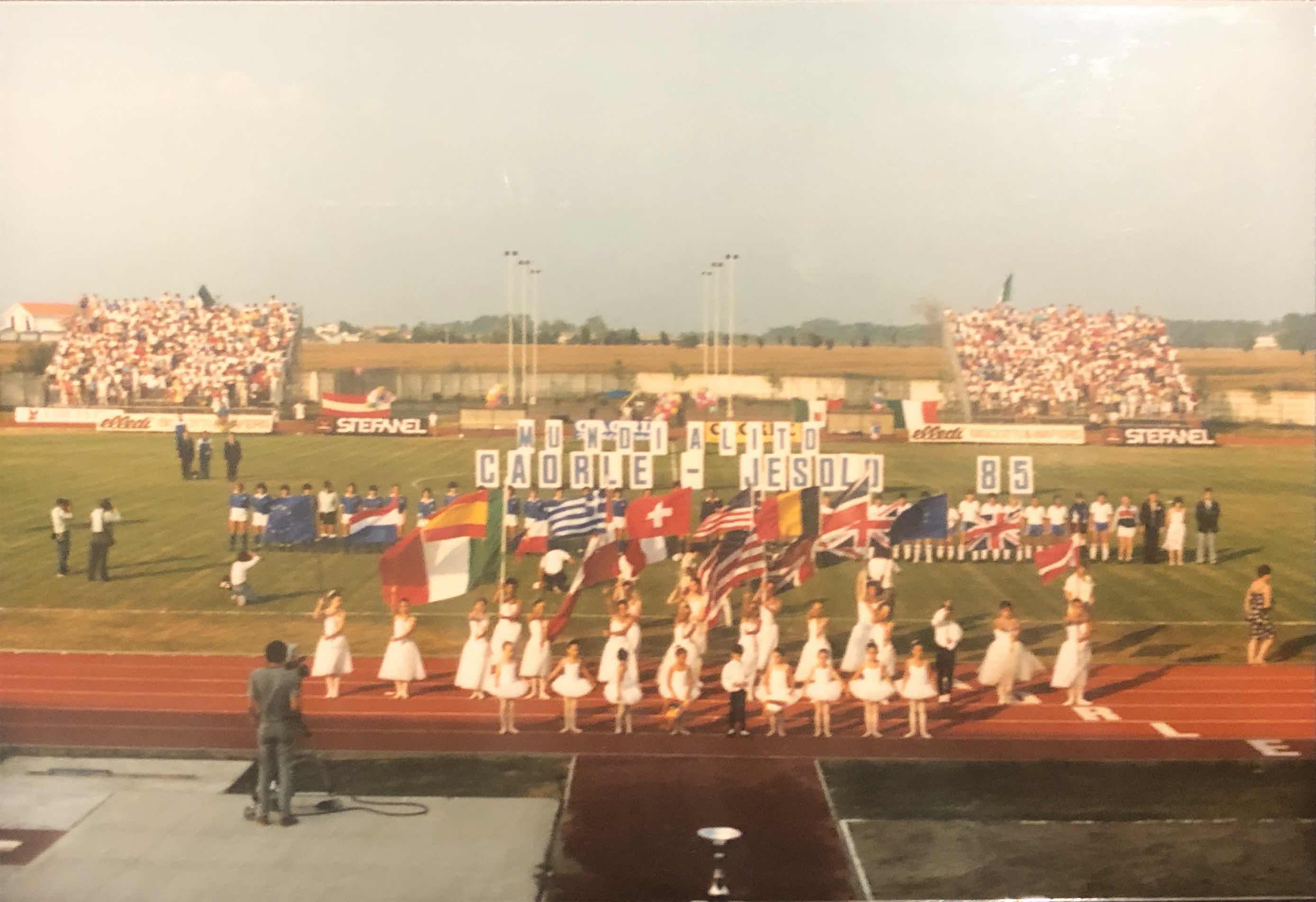‘Oosa! Oosa!’ Remembering the USWNT’s First Match, 40 Years Later

Like all the best sports legends, the tale of the U.S. Women’s National Team began 40 years ago today as the story of an underdog.
On Aug. 18, 1985, at the four-team Mundalito (“Little World Cup”) in Jesolo, Italy, the team played its first match, having trained together for only three days. Coach Mike Ryan led a team of 17 players, all of whom were younger than 25.
The players each received a pair of cleats and traveled with a $10 per diem. They sewed the “USA” lettering on their oversized, hand-me-down men’s jerseys the night before they flew to Italy. Many of the ‘85ers, as they are known today, had never left the United States before and needed emergency passports just to travel.
The U.S. had selected a women’s team on paper in each of the three years prior, but none of the teams ever played a game. There was no Women’s World Cup, and women’s soccer was not an Olympic sport.
In the years leading up to the Mundalito, though, interest in the women’s game had been growing. The Dallas Sting won the first international title for a U.S. team at a FIFA-sanctioned event in 1984, a hint that the American game was on par with the rest of the world.
The U.S. women were not accustomed to the atmosphere they found in their first match of the tournament, facing the host nation.
Italy played a physical match against the Americans, winning 1-0. Denise Bender wore the armband as the first captain in USWNT history. Michelle Akers sat the match out with an ankle injury but played in the next one, scoring the USWNT’s first goal in a 2-2 draw with Denmark. Emily Pickering assisted Akers’ goal and scored the second.

The Americans ended the tournament with two more losses, 3-1 to England and 1-0 in the rematch with Denmark. But the crowds seemed to fall in love with the Americans, chanting “Oosa!” for the first time, giving the team the chant it would adopt as its own.
“As far as the soccer part, the other teams were just head and shoulders above us in how they played, in their tactics, in their sophistication and their gamesmanship,” Akers told the Seattle Reign, which is commemorating the match at its game Monday. “What we brought to the table was this competitive mentality and physical, like never-say-die, never-quit mentality. You’re going to have to be tougher than us to beat us.
“And, you know, you can’t win games like that all the time against good teams, so that’s in part what we learned.”
On the flight home, the pilot asked for some of the players to visit the cockpit, another first for the women’s team and a quaint moment that foreshadowed a sudden rise in popularity.
In the four decades since, a lot has changed. Four World Cup titles and five Olympic gold medals tell a story of dominance on the field. Going from that $10 per diem to leading the movement for pay equity has made a global impact.
And the chant that was born in Italy still resonates on the pitch, in sold-out stadiums around the world: “Oosa! Oosa! Oosa!”
